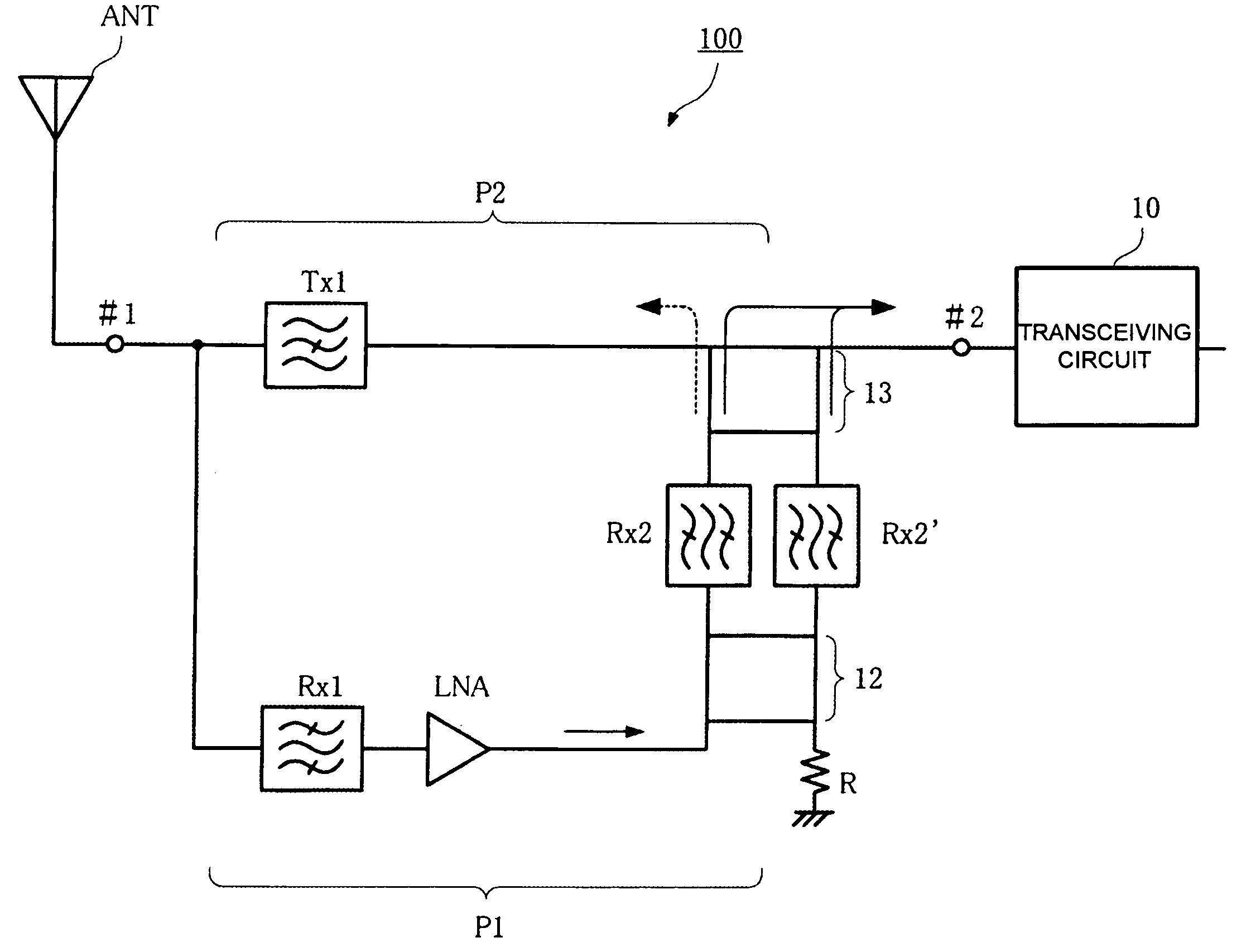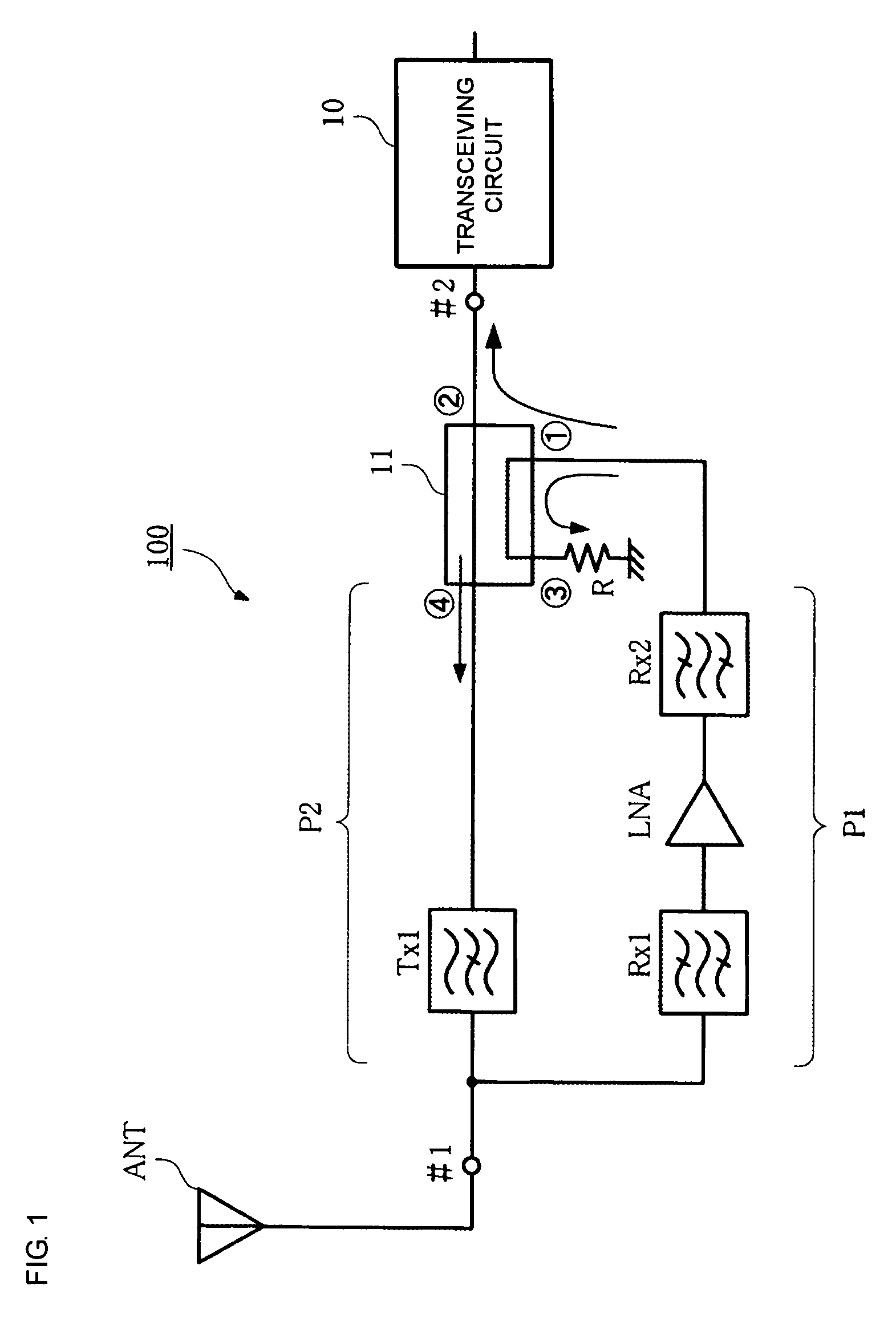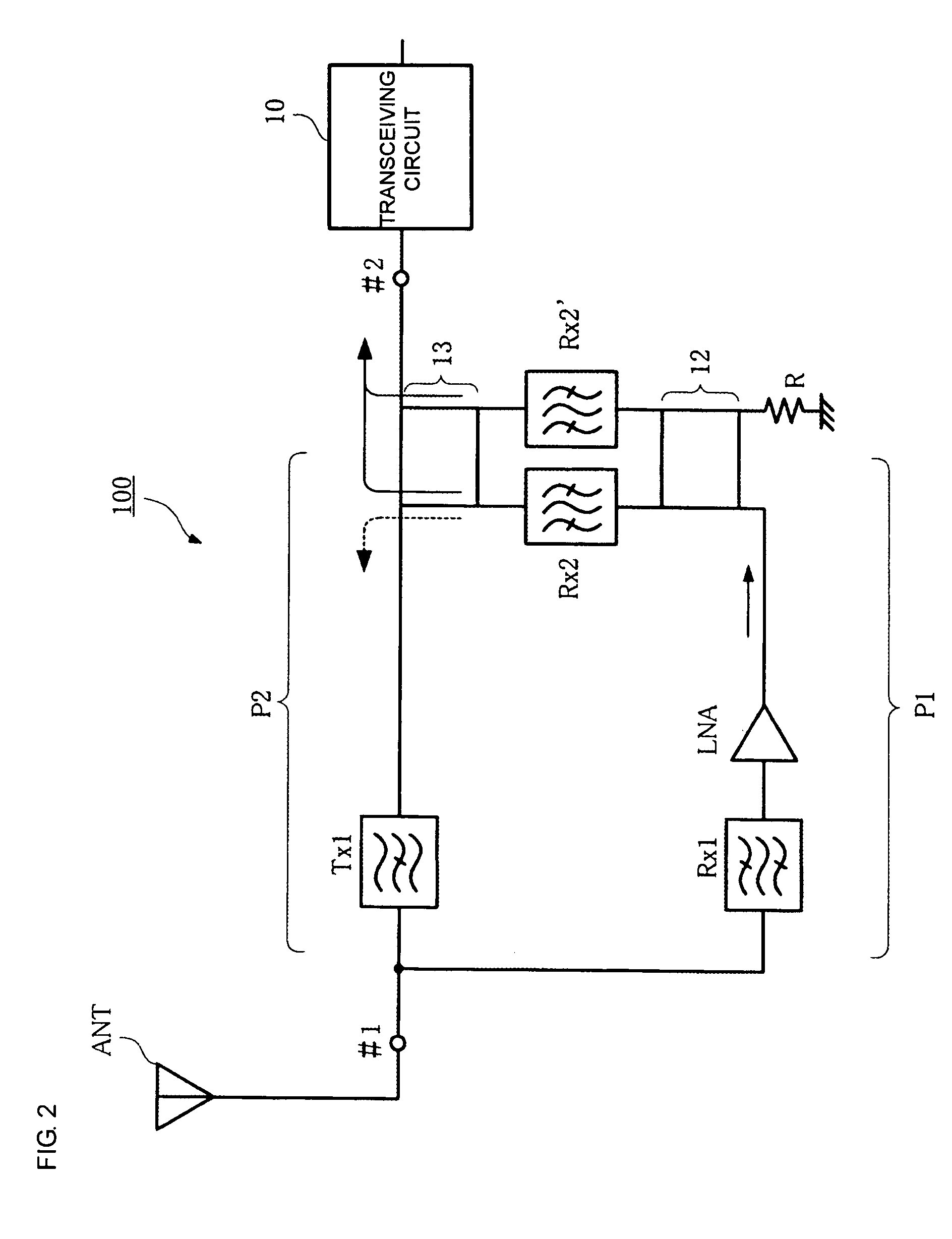Transmitting/receiving filter device and communication device
- Summary
- Abstract
- Description
- Claims
- Application Information
AI Technical Summary
Benefits of technology
Problems solved by technology
Method used
Image
Examples
first embodiment
[0025]FIG. 1 shows the structure of a communication apparatus having a transceiving filter device according to a In FIG. 1, reference symbol ANT denotes an antenna of a base station, and a transceiving circuit 10 is a circuit that transmits and receives a communication signal in the base station. In FIG. 1, the components other than the antenna ANT and the transceiving circuit 10 form a transceiving filter device 100.
[0026]The antenna ANT is connected to a first port #1 of the transceiving filter device 100, and the transceiving circuit 10 is connected to a second port #2 of the transceiving filter device 100. The transceiving filter device 100 and the antenna ANT are disposed on the tower top portion of the base station. Reference numerals Rx1 and Rx2 denote receiving filters having a bandpass characteristic that allows a receiving-frequency-band signal to pass and that stops a transmission-frequency-band signal. Reference symbol LNA denotes a low-noise amplification circuit. The ...
second embodiment
[0030]FIG. 2 shows the structure of a communication apparatus having a transceiving filter device according to a In this example, 90° hybrid circuits 12 and 13 and receiving filters Rx2 and Rx2′ are disposed at the connection between the first transmission path P1 and the second transmission path P2.
[0031]The 90° hybrid circuits (hereinafter referred to simply as “hybrid circuits”) 12 and 13 are power-halving circuits having directivity in the signal transmission direction. The hybrid circuit 12 power-halves the received signal amplified by the amplification circuit LNA, and the hybrid circuit 13 outputs the received signal which has passed through the receiving filters Rx2 and Rx2′ to the port #2. As described below, the received signal which has passed through the receiving filters Rx2 and Rx2′ is not transmitted to the second transmission path P2.
[0032]The receiving filters Rx2 and Rx2′ disposed between the two 90° hybrid circuits 12 and 13 pass the receiving frequency band and ...
third embodiment
[0036]The structure of a communication apparatus having a transceiving filter device will now be described with reference to FIGS. 4 through 6.
[0037]FIG. 4 is a block diagram of the transceiving filter device. The basic structure of this transceiving filter device is the same as that of the transceiving filter device shown in FIG. 2. In this example, one of two 90° hybrid circuits, that is, a 90° hybrid circuit 14, has a two-stage structure. The structure of the remaining components is similar to that shown in FIG. 2.
[0038]FIG. 5 shows the structure of the hybrid circuit 14 portion. Each of lines L1 through L7 has an electrical length of one-quarter the wavelength of the transmission frequency. The impedances of these lines are as follows:
[0039]L1 through L4: 35.95 Ω
[0040]L5 and L6: 105.23 Ω
[0041]L7: 47.26 Ω
[0042]FIG. 6 shows characteristics of the two-stage hybrid circuit, in which the y-axis designates the transmission loss or the reflection loss, expressed in dB. The center freq...
PUM
 Login to View More
Login to View More Abstract
Description
Claims
Application Information
 Login to View More
Login to View More - R&D
- Intellectual Property
- Life Sciences
- Materials
- Tech Scout
- Unparalleled Data Quality
- Higher Quality Content
- 60% Fewer Hallucinations
Browse by: Latest US Patents, China's latest patents, Technical Efficacy Thesaurus, Application Domain, Technology Topic, Popular Technical Reports.
© 2025 PatSnap. All rights reserved.Legal|Privacy policy|Modern Slavery Act Transparency Statement|Sitemap|About US| Contact US: help@patsnap.com



